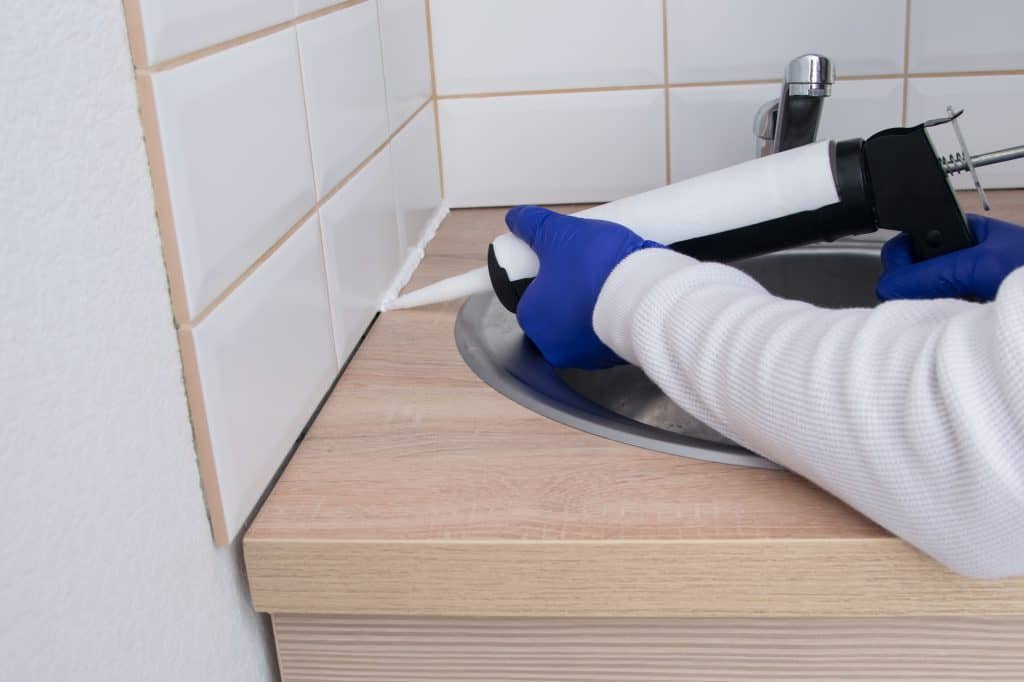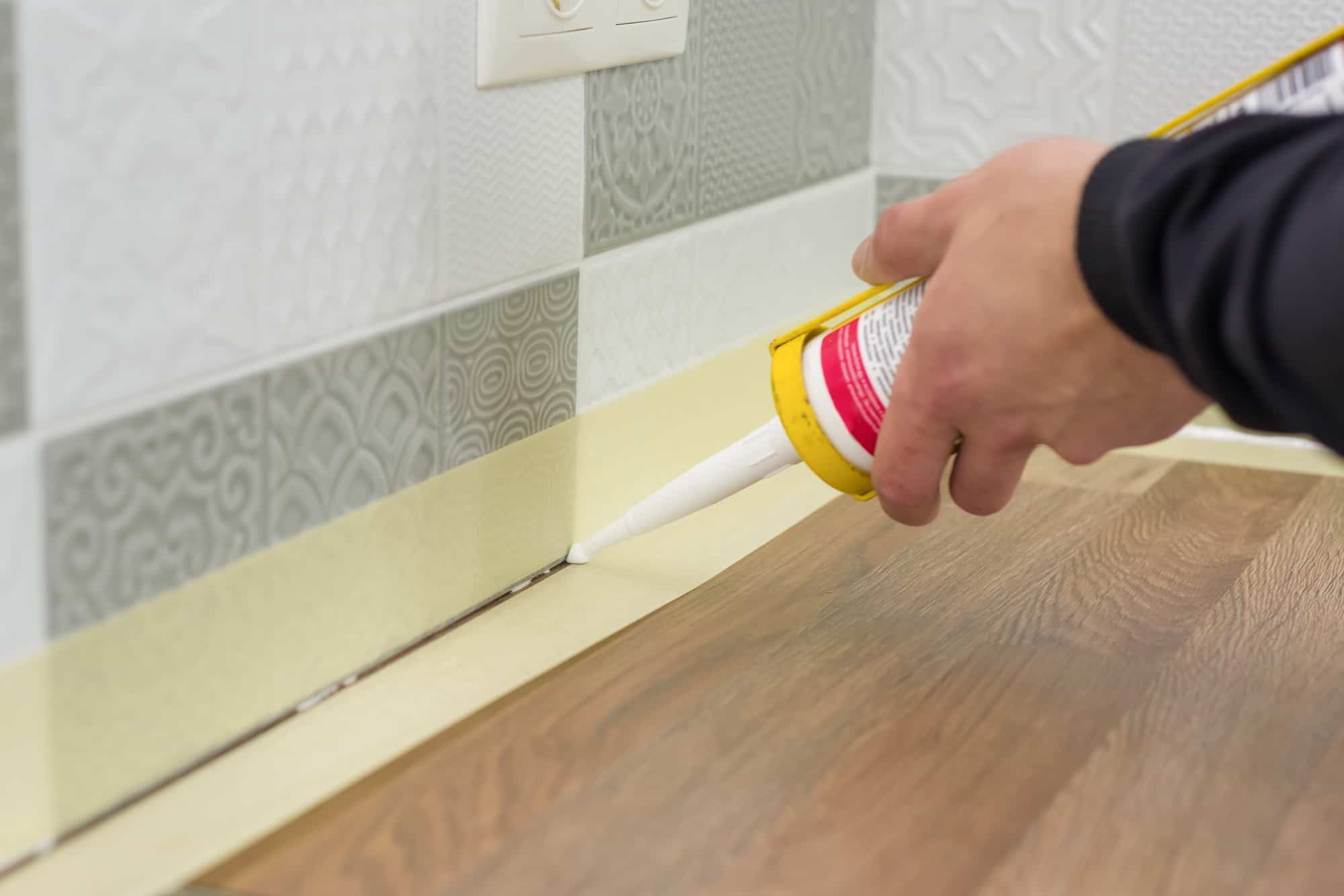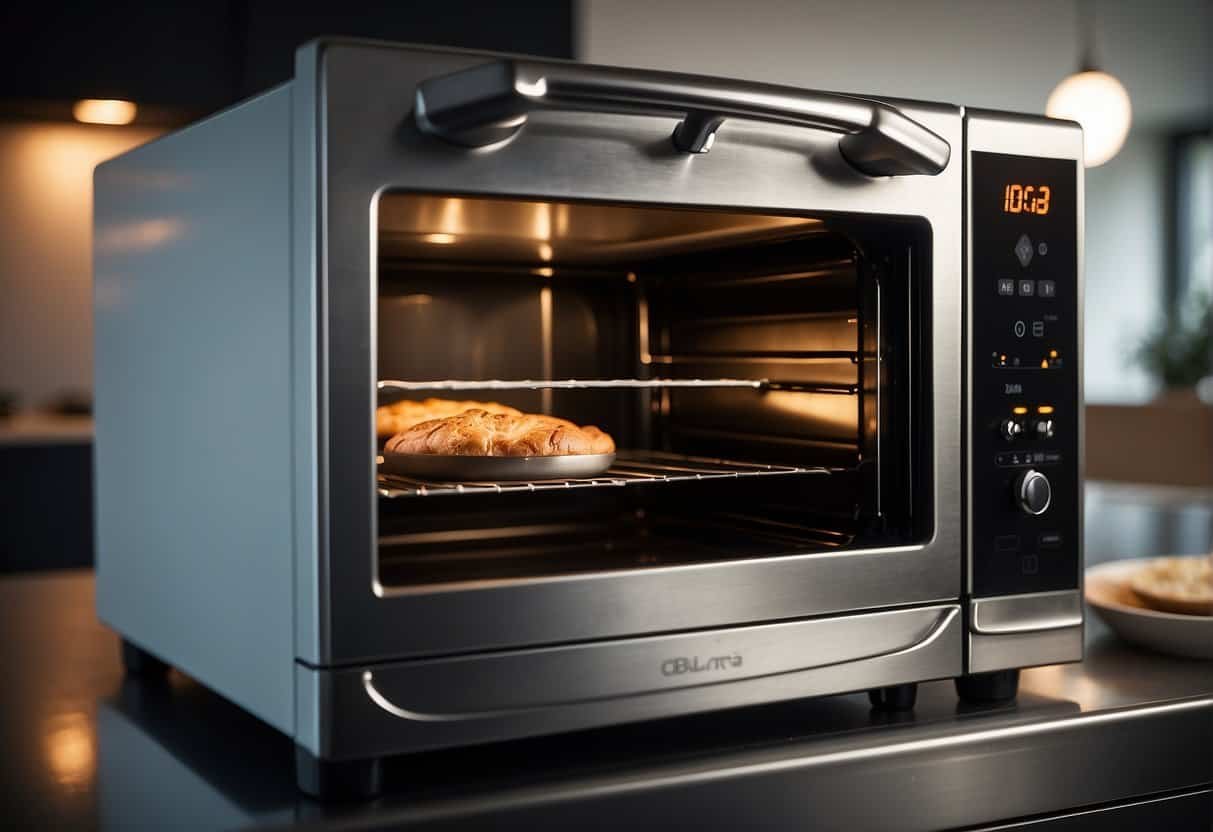Slide-in ranges are meant to sit flush against the wall of your kitchen. Sometimes, however, there can be a gap behind your stove. Bits of food and ingredients (or even splashes of oil) can fall through this gap, creating an unhygienic problem you have to deal with.
To cover this gap behind a slide-in range, you can use or install things such as small space fillers (e.g. caulk, plastic tubing), backsplash, countertop, pre-made gap fillers, and a kitchen shelf.
This article goes over the various solutions to fill the gap behind a slide-in range, whether a countertop is required behind the range, and how large the gap should be between your stove and the wall.
How To Fill the Gap Between Your Stove and the Wall
Slide-in ranges are designed to seamlessly fit in the space between two countertops for a centralized cooking area in your kitchen.
However, a slide-in range can sometimes have a gap behind it instead of sitting flush against the kitchen wall. You’ll also notice your stove sticking a little further out than your counter’s edge.
Here are some ways to fill that gap behind your stove: (source: WikiHow)
Small Space Fillers
Some materials are only recommended when the gap between your wall and stove is relatively small.
- Caulk: When the gap is around 6 mm (¼ in), you can use silicone caulk to seal the space. If the gap is wider, you should use other materials to fill it.
- Plastic tubing: This tubing is readily available in any hardware store. Its diameter can range from 12 mm to 25 mm (½ in to 1 in).
To use plastic tubing to fill the gap, wedge it in the space between your stove and the countertop or wall. You’ll want a tube with a wider diameter than the actual gap so it fits snugly in place and doesn’t fall.
Backsplash
A backsplash is the material installed on the wall above a kitchen counter to protect it from splashes. (source: Kitchen Cabinet Kings) These splashes include sink water, spatter from cooking oil, or other fluids used in the kitchen.
Backsplashes are made of materials like ceramic tile and have to be resistant to moisture, liquids, and heat.
However, installing a backsplash behind your slide-in stove may not be the best solution to cover a large gap between the kitchen appliance and the wall.
A backsplash is usually meant to follow the surface of the walls beside it. If you install backsplash material over your existing wall, it only sticks out enough to cover a gap if it’s applied right above the height of the stove. Otherwise, a backsplash will just push out your stove even more.
Tiles are usually 6 mm to 19 mm (¼ in to ¾ in) or thick. (source: SF Gate)
Tile adhesive is used to stick tiles to the wall, adding only 1 mm to 2 mm (0.05 in to 0.09 in) to the thickness. (source: Home of Tile) That’s still much less than 25mm (1 in).

Countertop
This solution is applicable if the gap is around 5 cm (2 inches). The thinner the strip has to be, the higher its chance of cracking or breaking. Pick a material that matches your existing kitchen countertop or theme.
Also, talk to your contractor about this, since experienced professionals can cut granite or marble pretty thin without any problems. They can even install it so the overall look with existing countertops is seamless.
Pre-Made Gap Fillers
The more common stove gap filler is designed for the sides of your range. They’re T-shaped inserts meant to overlap part of your stovetop and kitchen counter — made of silicone, plastic, vinyl, and stainless steel.
For the rear of your stove, there are stainless steel gap fillers that can be rectangular or triangle-shaped.
These fillers are sold with fixing accessories that can be screwed into the wall to secure the filler in the gap. If you choose this solution, measure the gap between your stove and the wall to ensure the product you buy is the right size.
The Linda’s Essentials Silicone Stove Gap Covers on Amazon.com are made of flexible silicone, making it easier to cover gaps, especially if there’s a height difference between the countertop and stovetop. Cleaning is also easy because these stove gap covers are dishwasher safe.
Kitchen Shelf
You can also go the pre-made or DIY route for the kitchen shelf solution to cover your rear stove gap. Just remember that it would be best to choose a material resistant to fire and liquid splashes.
When you have a gap a few inches wide, you may want to put an additional shelf right above your stove. You can use this to place spices and other small bottles or containers of common ingredients.
The StoveShelf Magnetic Shelf on Amazon.com has magnets to attach this small shelf to your stove without the need for drilling or adhesives. This also comes in different colors to match your appliance or the rest of your kitchen.
Does a Slide-In Range Need a Countertop Behind It?
A countertop isn’t necessary behind a slide-in range. You can fill the gap behind your stove with different materials and solutions, from caulk to pre-made fillers and kitchen shelves. It may take years before you change to a different model, but a countertop may not be a solution to cover a gap.
You’ll have to measure the dimensions of the space in your kitchen and make sure the model you want will fit.
If there’s a model you want that doesn’t fit with the existing countertop style, you’ll have to spend a bit more on renovations.
How Big Should the Gap Behind My Stove Be?
The gap behind your stove should be around four centimeters (1.5 inches) so that there is enough room for air to circulate. However, you should also check the space requirements for your specific model. (source: GE Appliances Products)
Sometimes, a gap between the stove and the wall results from the gas pipe sticking out from the wall. Older range models have a recessed back to account for this. Meanwhile, newer range models usually have flat backs, hence the wall gap.
Other stoves, like free-standing stoves, don’t need gaps behind them at all and can sit flush with your kitchen wall.
The gap behind a stove can be filled with plastic, silicone, tile, and stainless steel. This gap is usually covered to prevent oil and other food bits from falling into the space.
I hope this article helps you get rid of the annoying (and unhygienic) gap behind your range or stove!












